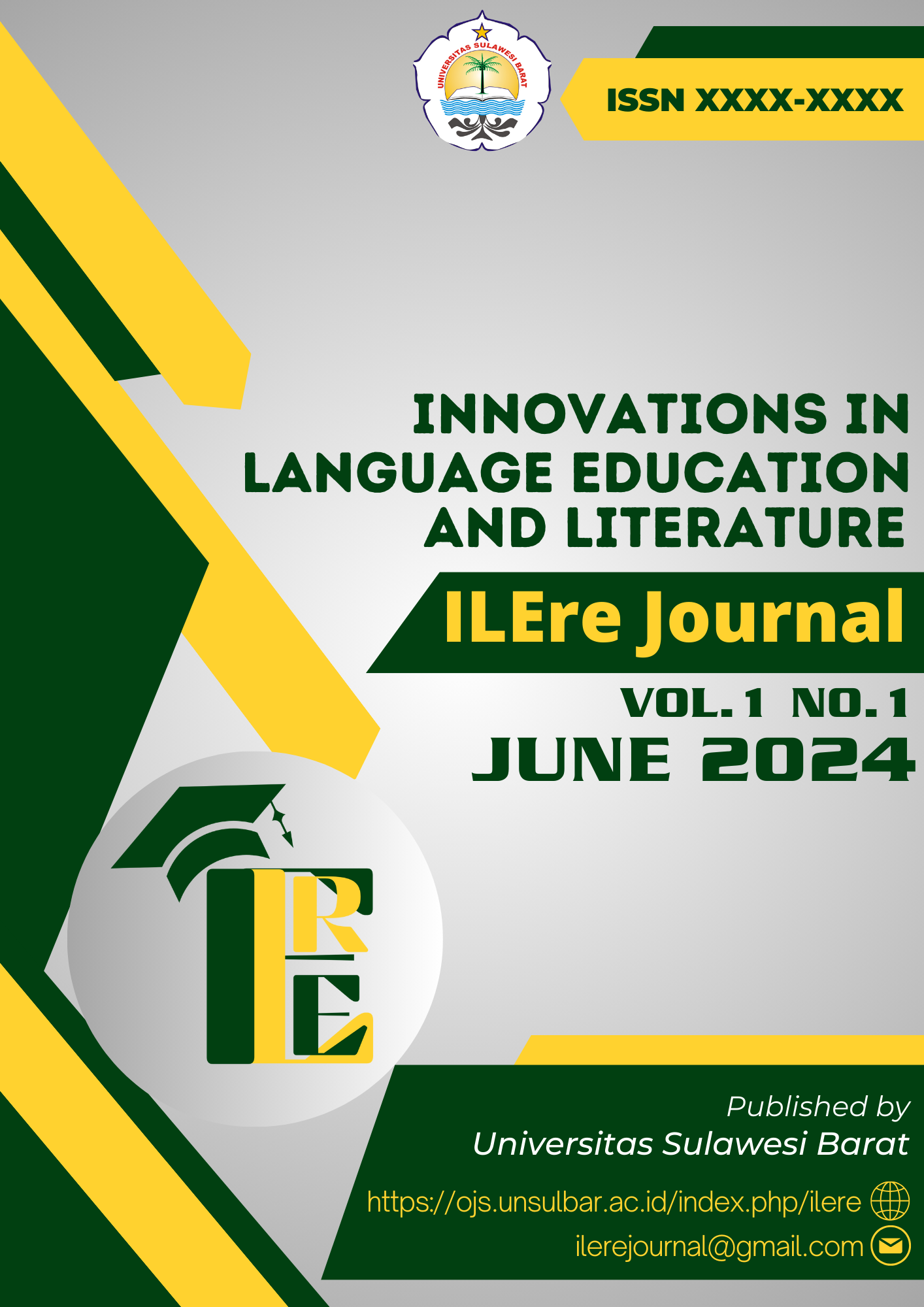The Semiotics of Luck: Interpreting Visual Metaphors in the Animated Film
Abstract
This study examines the symbolic meanings conveyed through visual metaphors in the 2022 animated film Luck. Utilizing Charles Sanders Peirce's semiotic theory, the research aims to identify and interpret the signs present within the movie. The study employs a qualitative research paradigm and a descriptive approach, collecting data through repeated viewings of the film and cataloging the identified signs as icons, indexes, or symbols per Peirce's triadic model. The analysis reveals a total of 16 signs, comprising 3 icons, 4 indexes, and 9 symbols, which are then subjected to semiotic analysis. The findings demonstrate that the iconic signs, such as the photograph of the protagonist Sam as a child, symbolize his past. Indexical signs, like the list of orphanages he resided in, indicate his nomadic upbringing. Symbolic representations, including the four-leaf clover and the leprechaun characters, signify cultural notions of luck and fortune. The pervasive use of the color green and imagery like ladybugs further reinforce the thematic exploration of luck and prosperity. Overall, the movie Luck employs a rich tapestry of visual symbols to delve into complex concepts like fate, perspective, and fortune, enhancing the narrative depth and enriching the viewing experience.
References
Atmaja, Karta. (2021). The Analysis of Semiotics in the Main Character Raya and the Last Dragon Film. Lingua: Jurnal Ilmiah, 17 (2). 45-64. https://doi.org/10.35962/lingua.v17i2.87
Bashir, M. Ulduz. (2023). Family and Marriage Traditions in Azerbaıjan Folklore. International Journal of English Literature and Social Sciences, 8 (2). 84-88. https://dx.doi.org/10.22161/ijels.82.11
Beyer, Garth. (2012). “A Symbol of Good Fortune.” Garthbox. https://garthbox.com/
Chandler, Daniel. (2007). Semiotics: The Basics. 2nd Edition. London: Routledge.
Creswell, J. W., and Creswell, J.D. (2022). Research Design: Qualitative, Quantitative, and Mixed Methods Approaches. 6th Edition. Los Angeles: Sage Publications.
Danesi, Marcel. (2004). Messages, Signs, and Meanings: A Basic Textbook in Semiotics and Communication Theory. 3rd Edition. Toronto: Canadian Scholars’ Press Inc.
Deledalle, Gerard. (2000). Charles S. Peirce’s Philosophy of Signs. Indiana, USA: Indiana University Press.
Johansson, N., Anikin, A., & Aseyev, N. (2019). Color Sound Symbolism in Natural Languages. Language and Cognition, 12(1), 56–83. https://doi.org/10.1017/langcog.2019.35
Park, Ae-Kyu. (2015). The Cat: A Symbol of Femininity. Journal of Symbols & Sandplay Therapy, 6 (1). 43-61. DOI: https://doi.org/10.12964/jsst.150003
Sebeok, Thomas A. (2001). Signs: An Introduction to Semiotics. 2nd Edition. Toronto: University of Toronto Press.
Septiani, Dwi Lestari, Rejeki, S., Widisanti, N.M. (2019). The Relationship between Symbol and Meaning in the Film Zootopia. Journal Albion: Journal of English Literature, Language and Culture, 1 (1). 1-10.
Sulistiawati, Hikmah, Nur, Hasbi, M. (2024). Unveiling Wordsworth's Daffodils: A Semiotic Tapestry of Signs and Symbols. Global English Insights Journal (GLENS), 1 (2), 76-88. https://doi.org/10.61220/glens.v1i2
Swanson, Bailey, ""Lucky" Charms" (2019). “Lucky Charms”. Christian Studies Class Publications. 1. https://scholarlycommons.obu.edu/religion_class_papers/1
Willow, C. (n.d). Chinese Mythology: Dragons and their Importance. https://www.oxbowschool.org/assets/gallery/os37-final-projects/docs/willow-c-os37fppaper.pdf















 Email: ilerejournal@gmail.com
Email: ilerejournal@gmail.com
